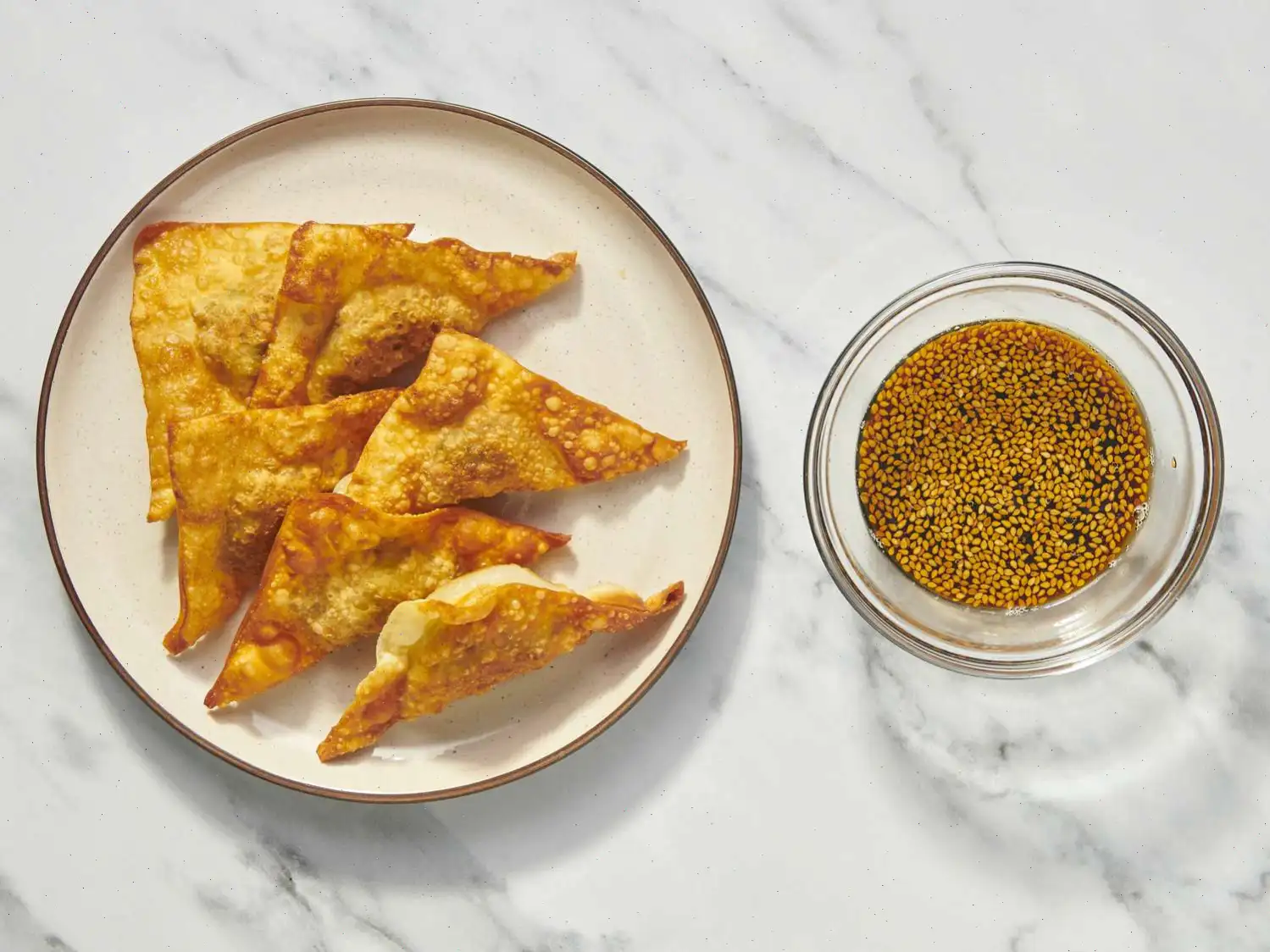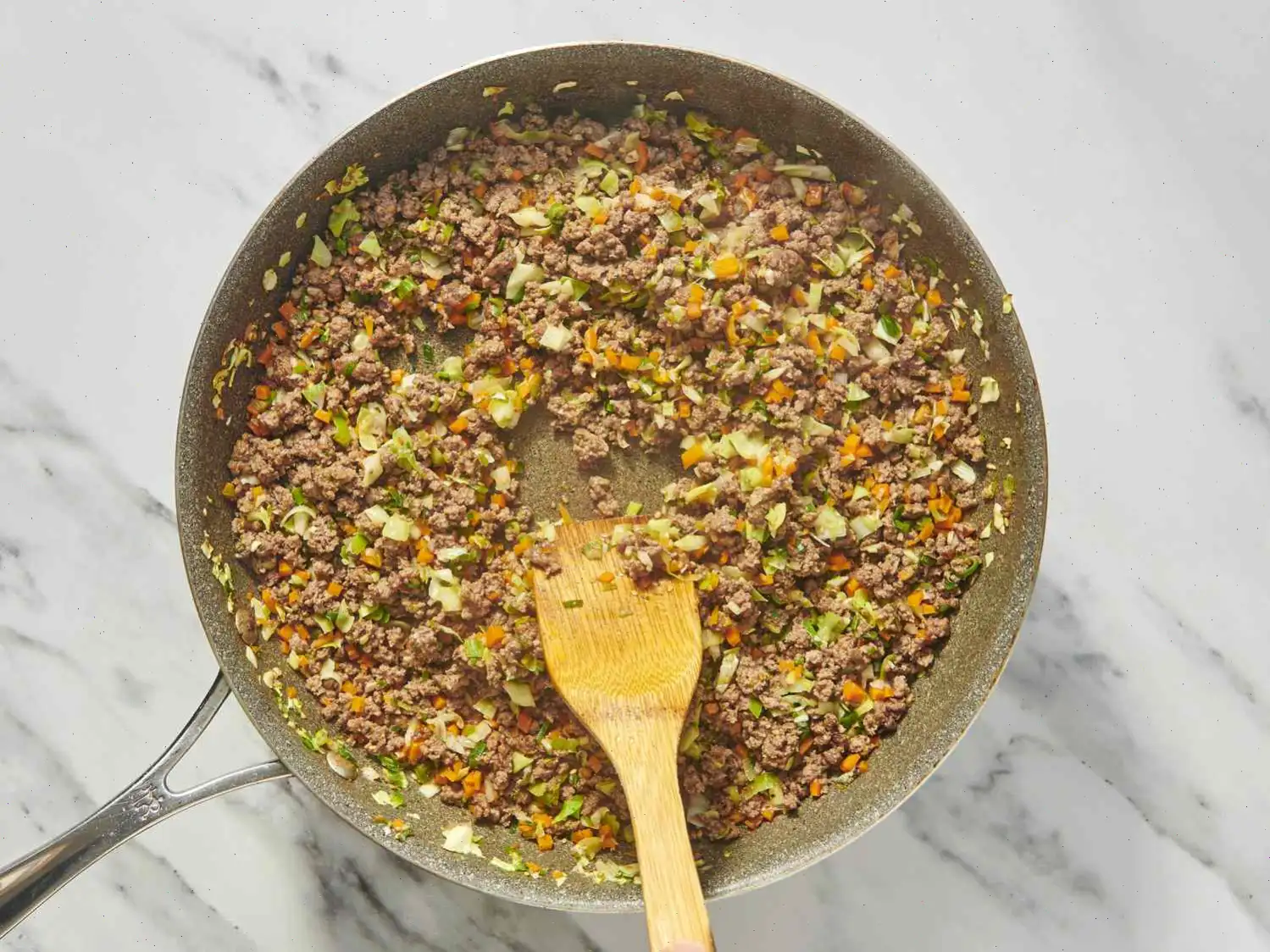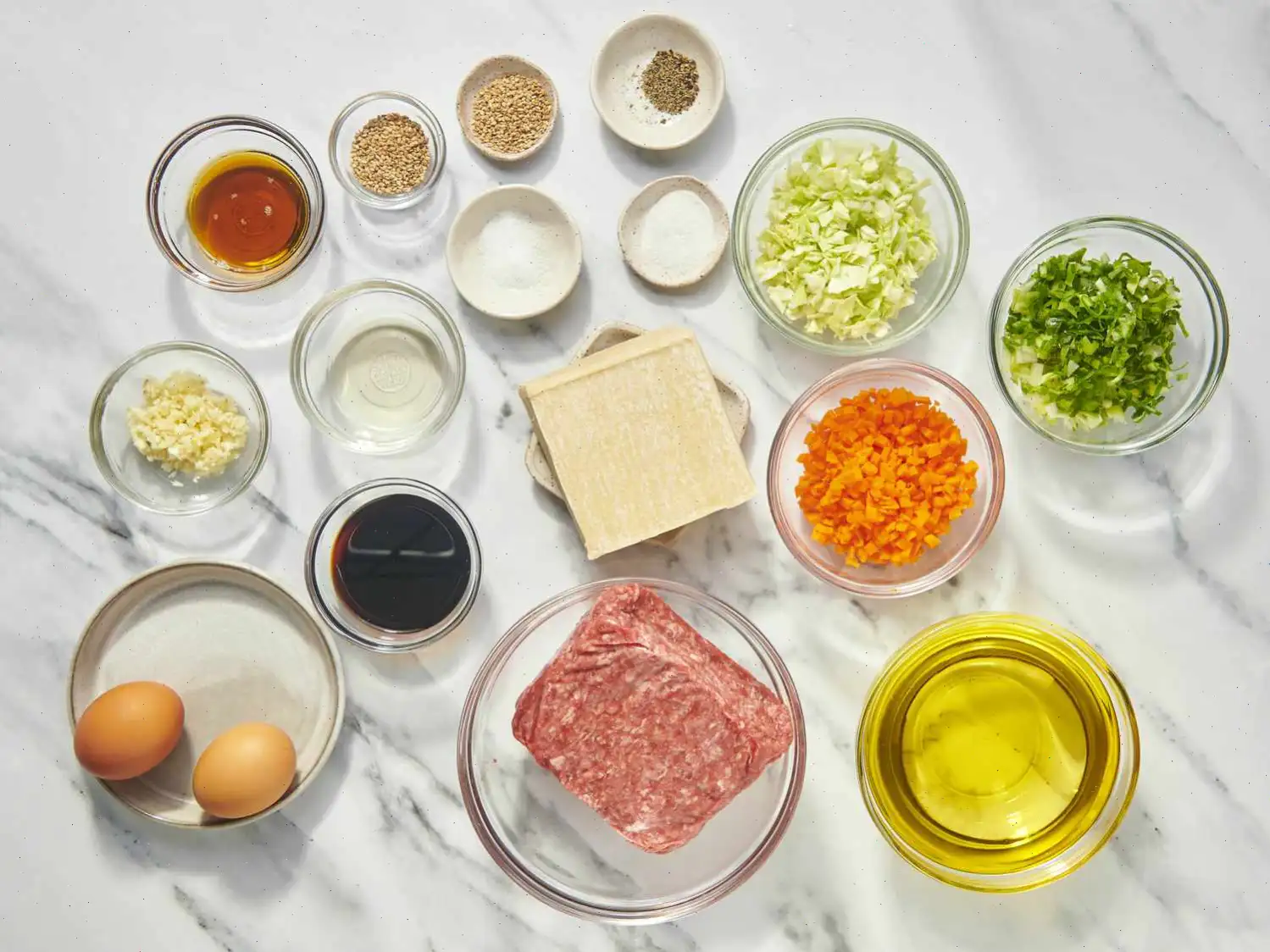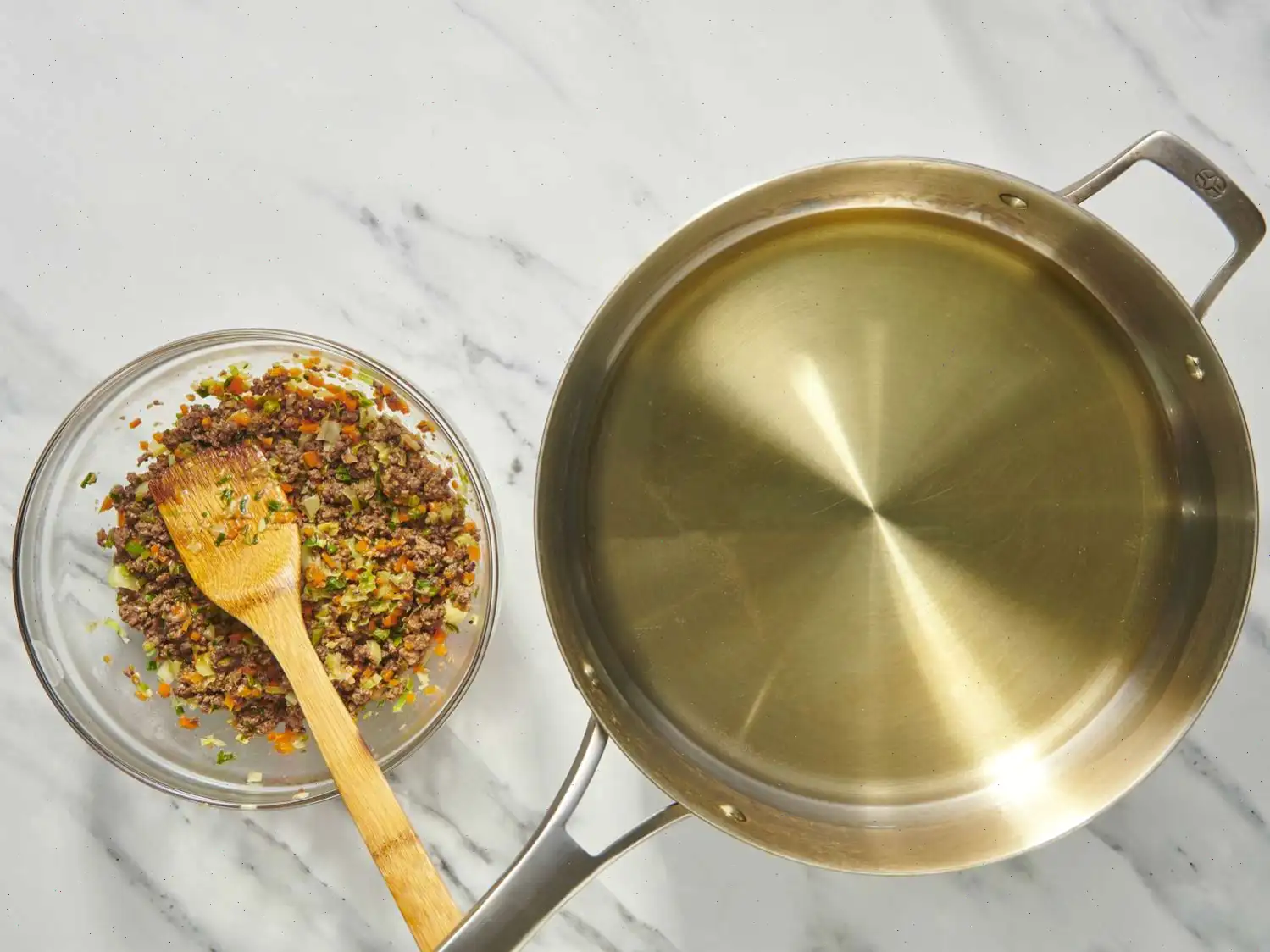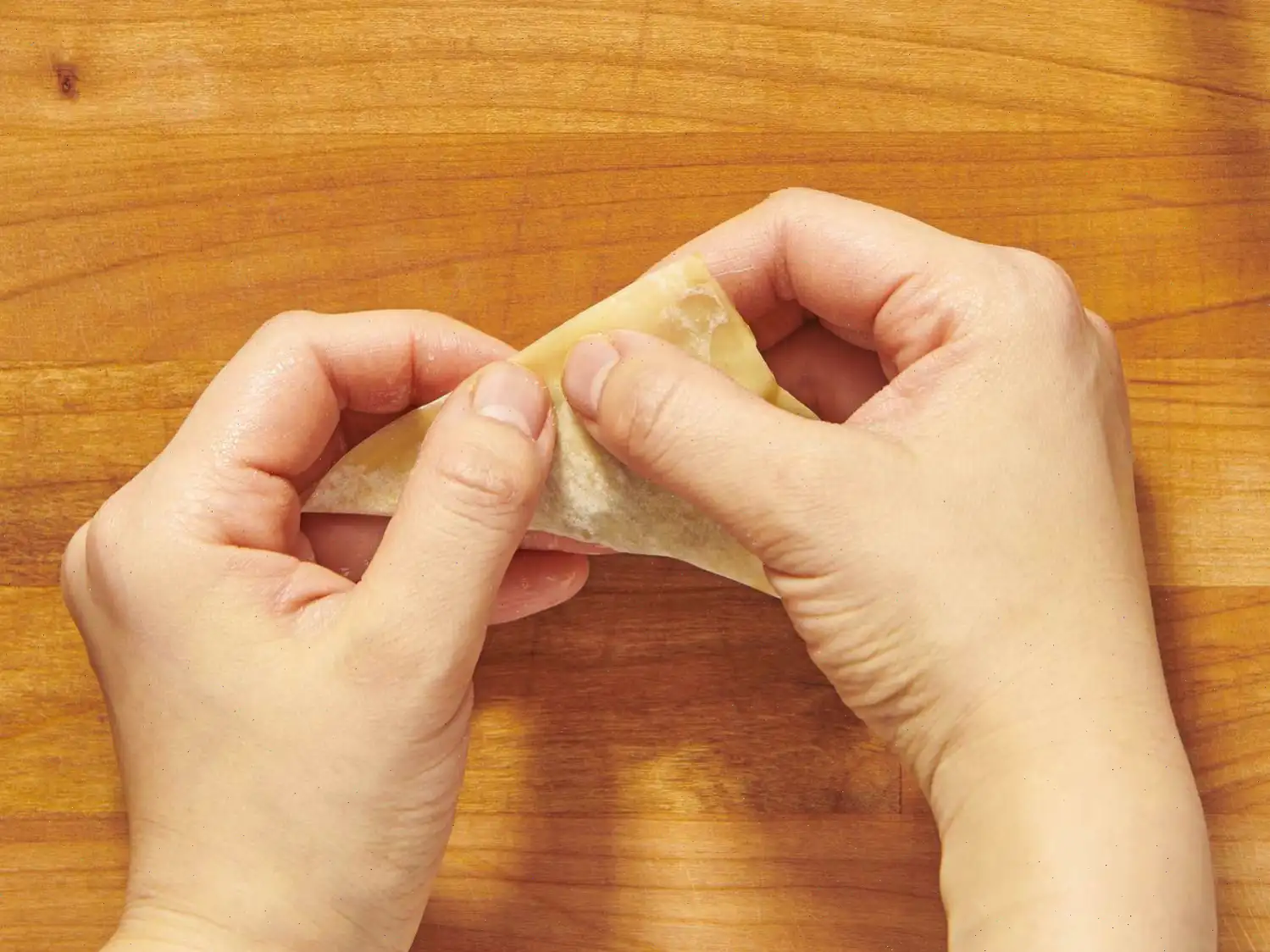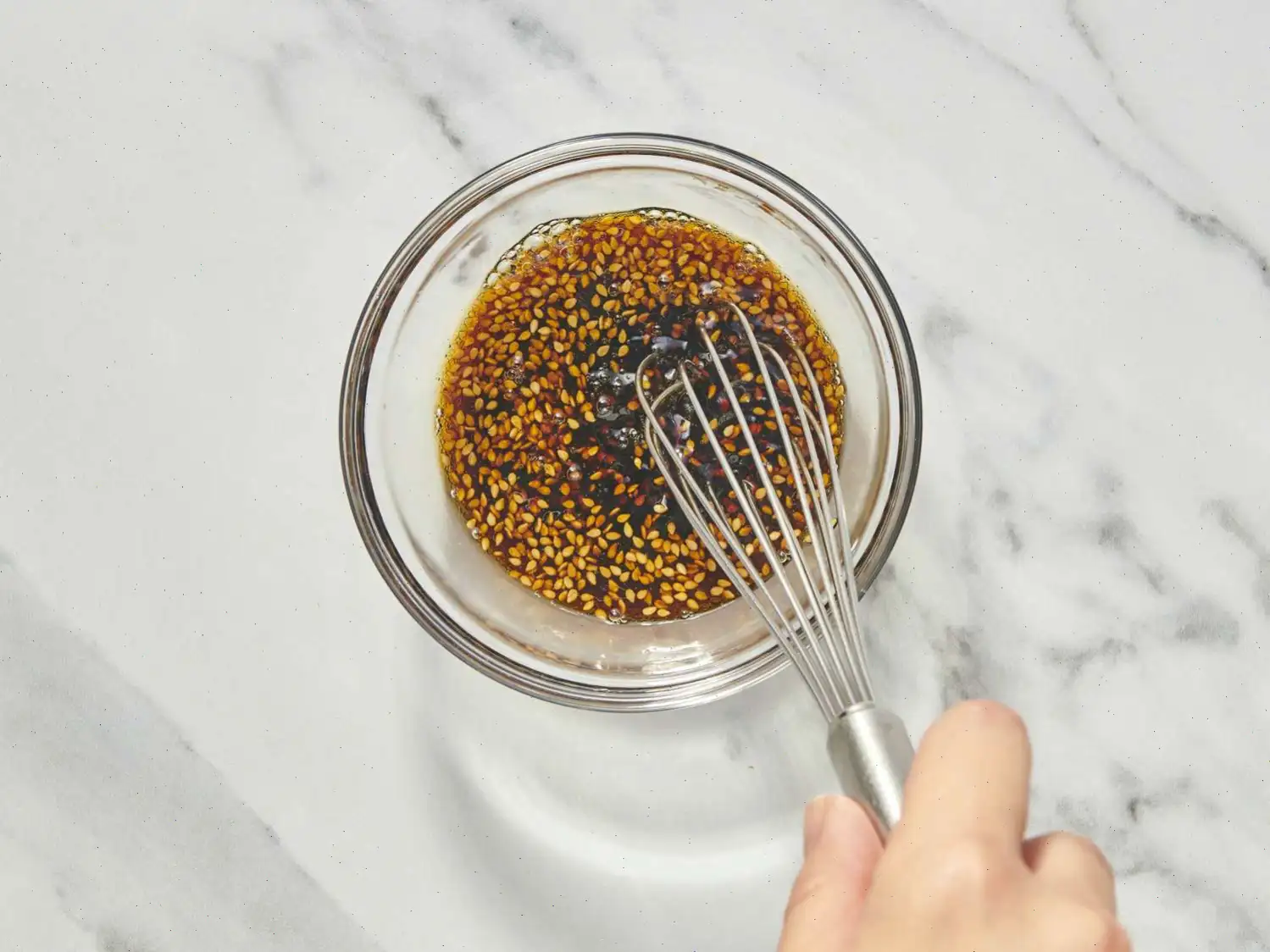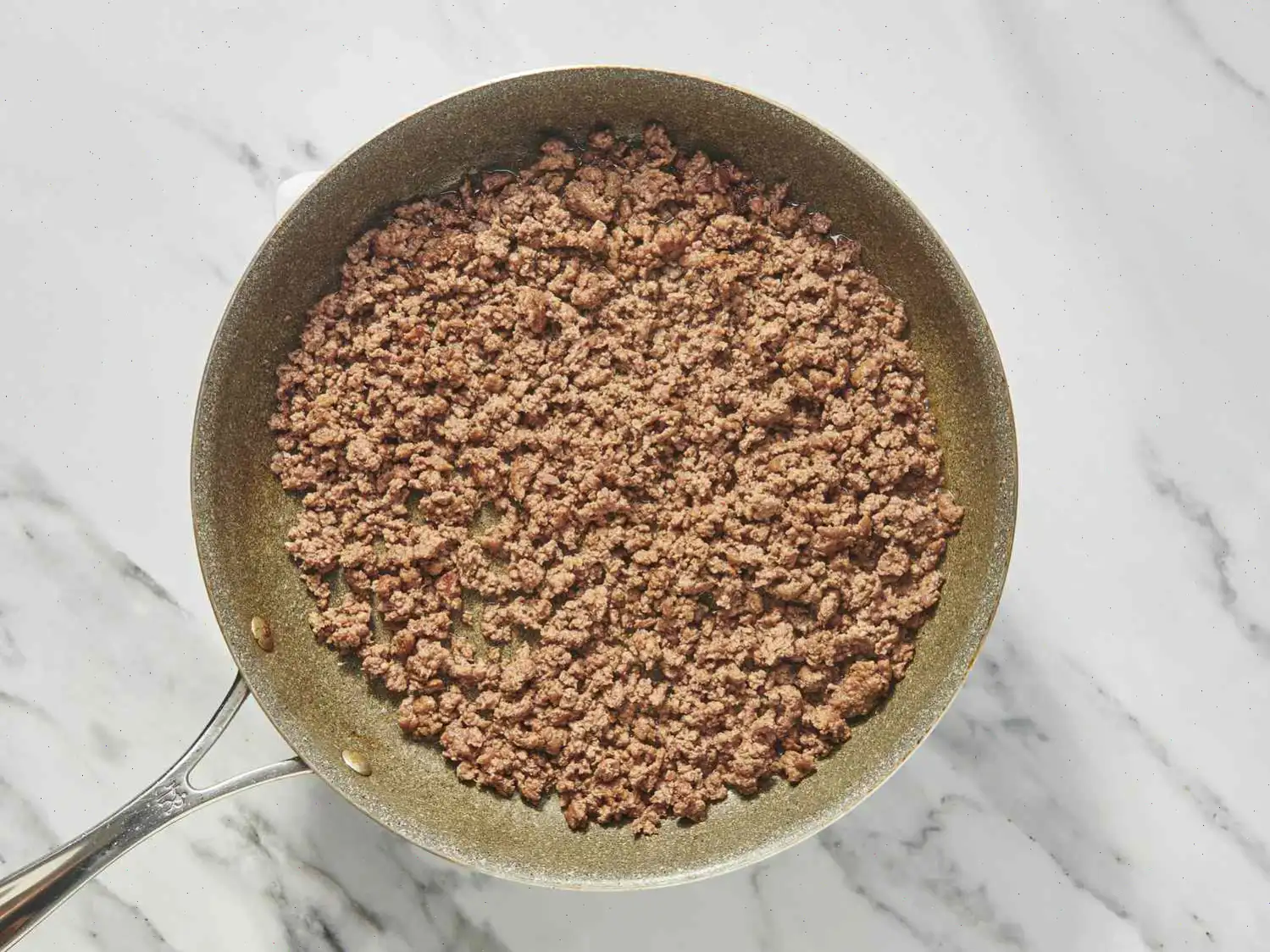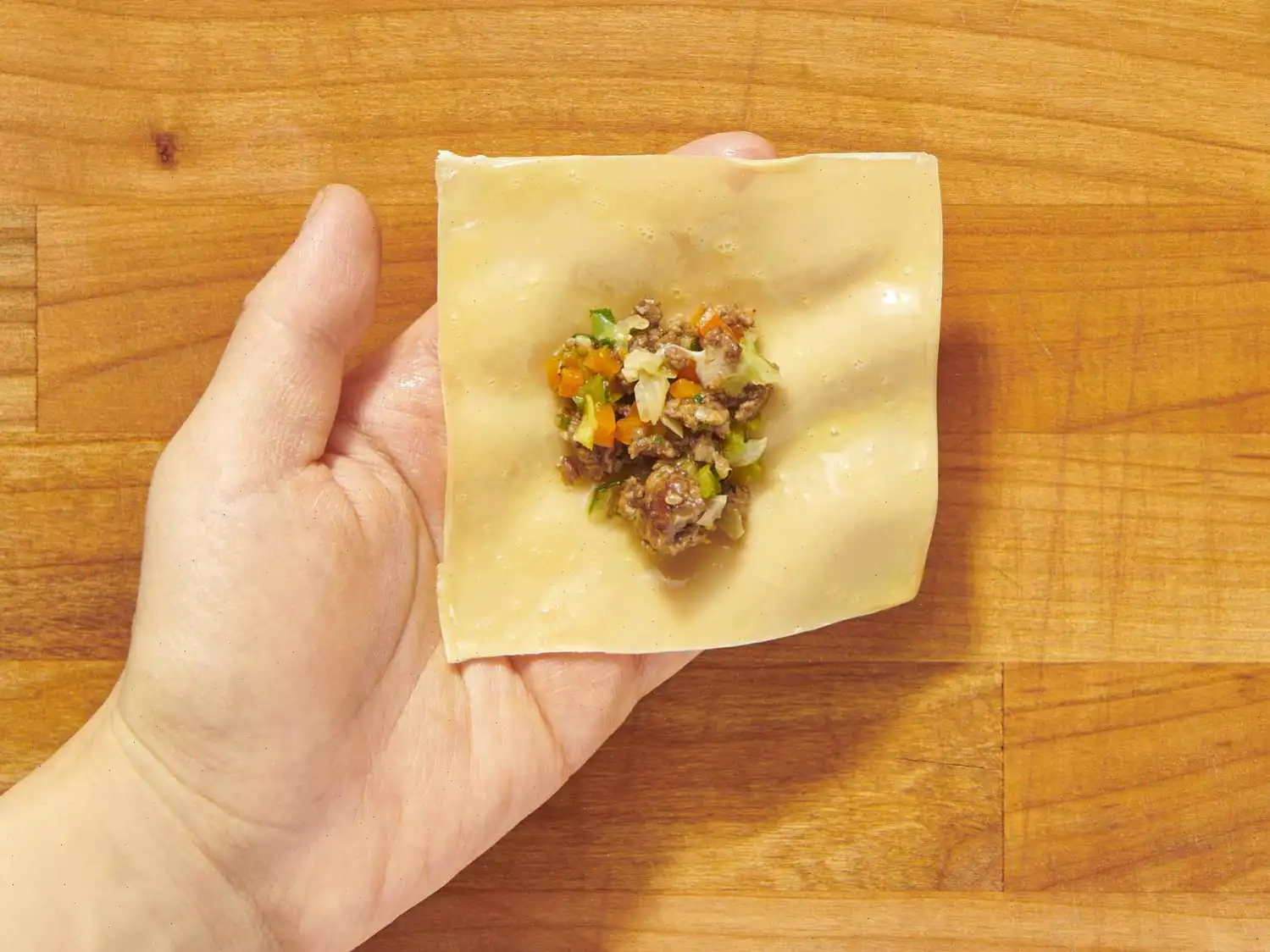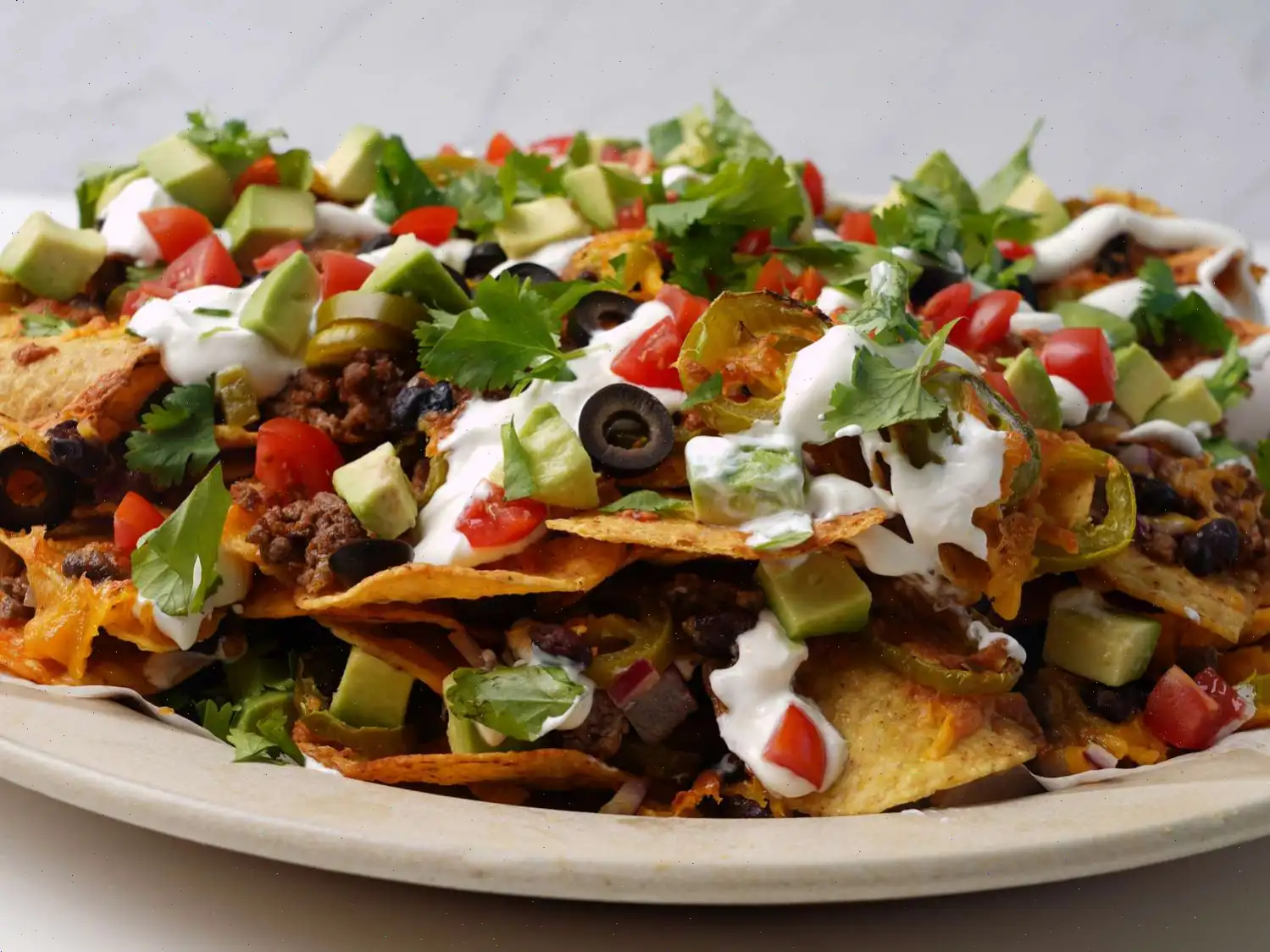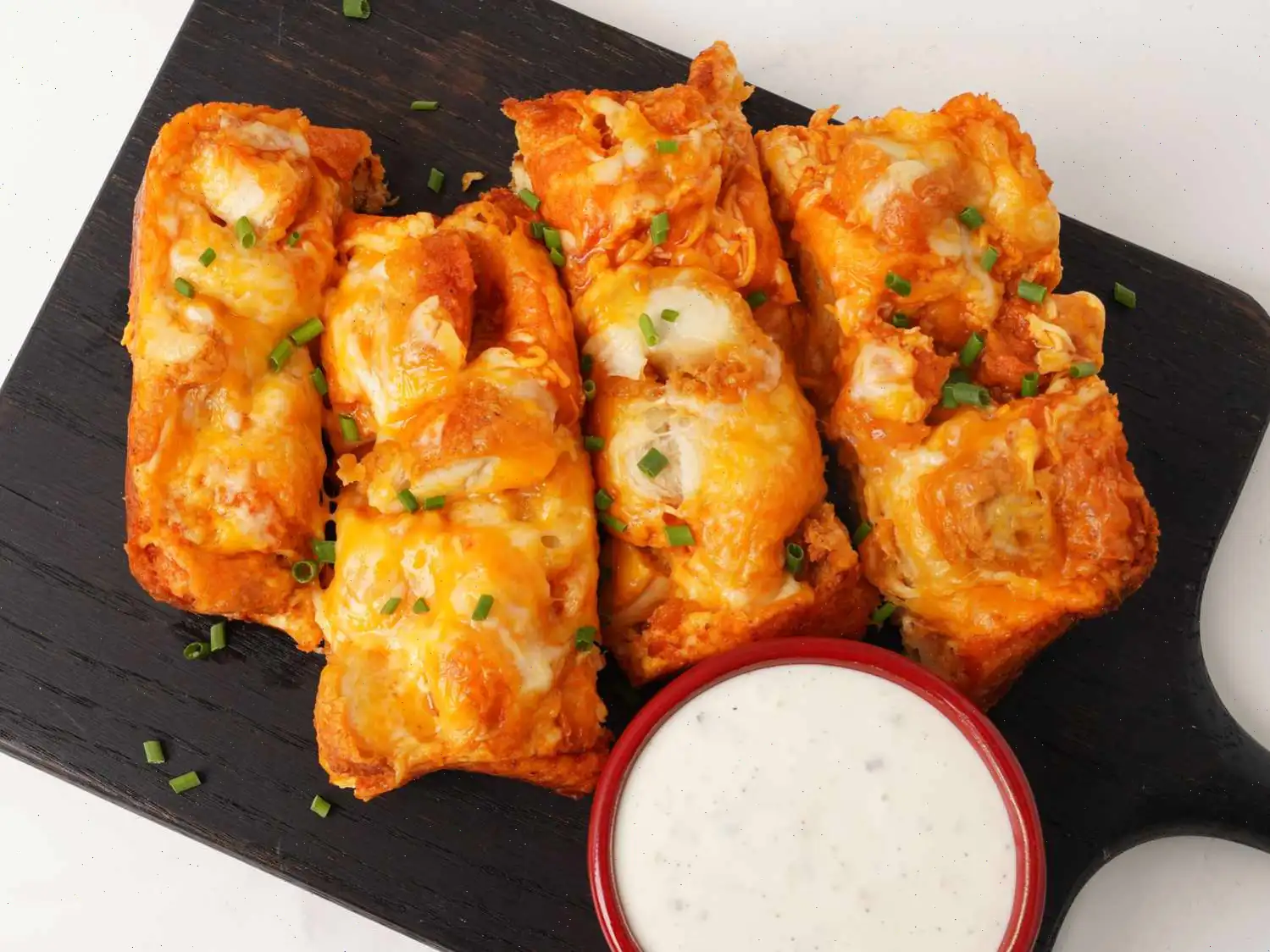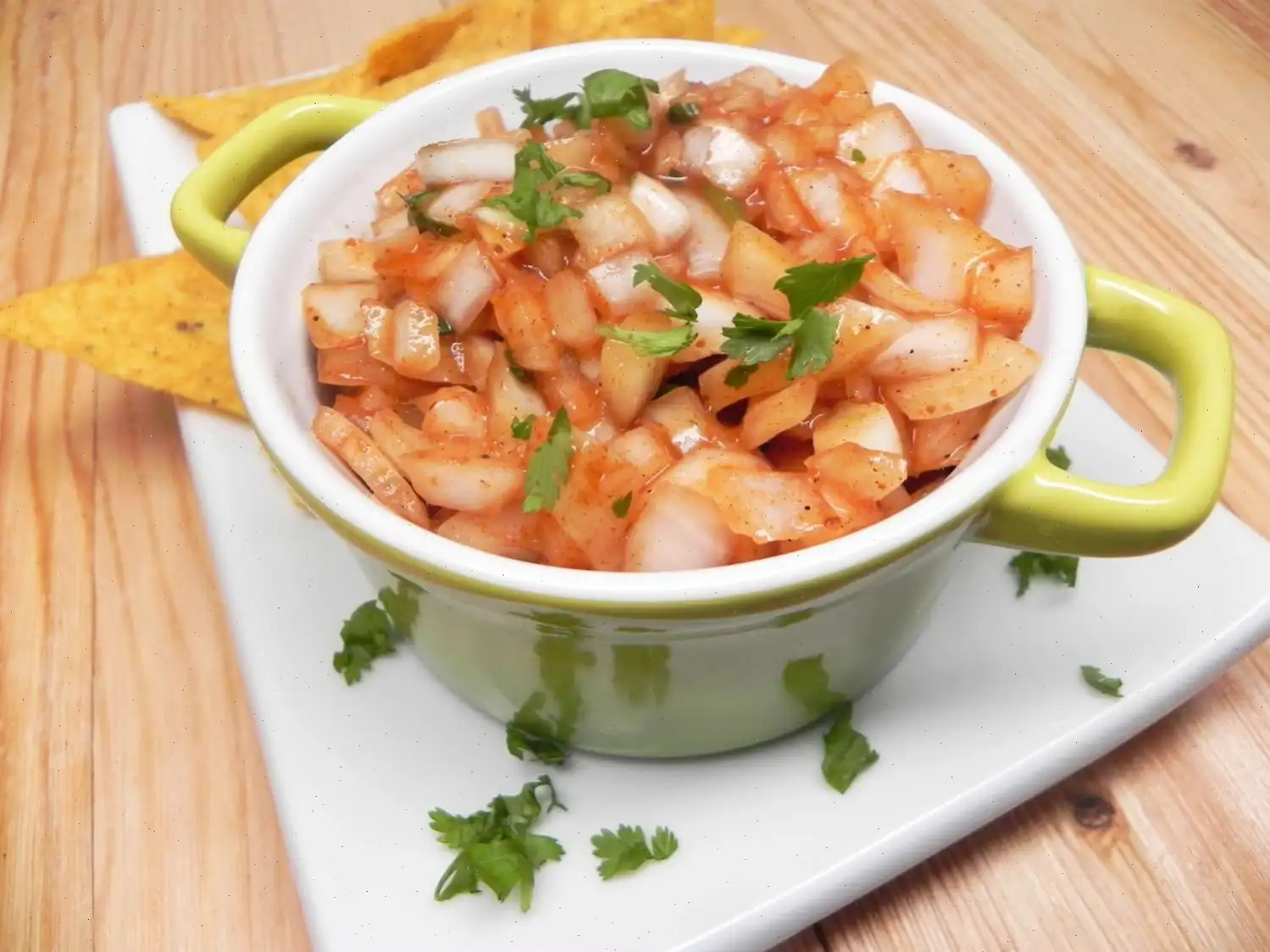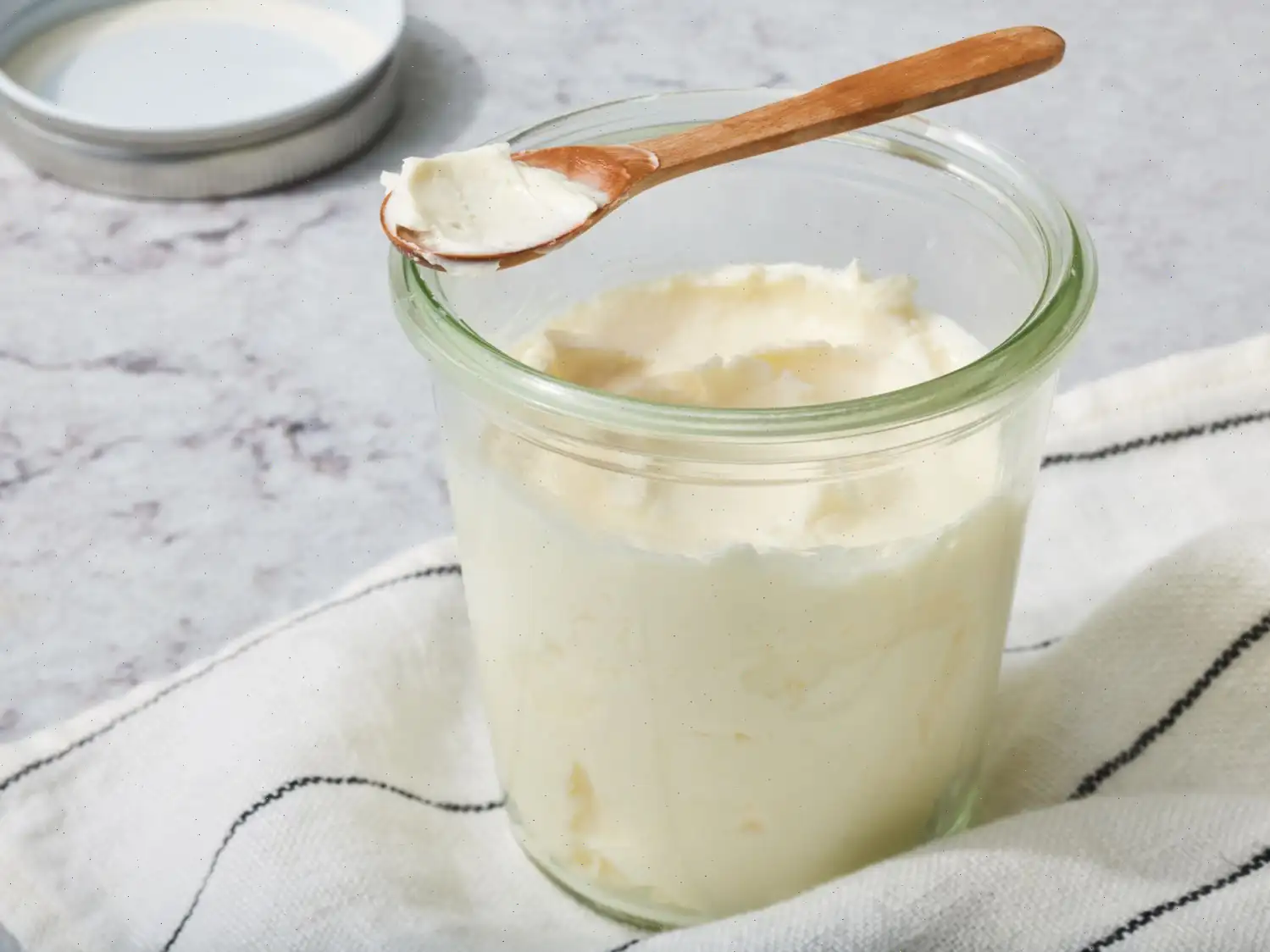
Yaki Mandu (Fried Korean Dumplings) Recipe
Wonton Dumplings with Beef Filling
Original recipe yield: 25 servings
Ingredients
- 1 pound ground beef
- cup finely chopped green onions
- cup finely chopped cabbage
- cup finely chopped carrot
- 4 cloves garlic, minced
- 4 teaspoons sesame oil, divided
- 1 tablespoon toasted sesame seeds
- teaspoon monosodium glutamate
- Salt and ground black pepper to taste
- 2 large eggs
- 1 cups vegetable oil for frying
- 1 (16 ounce) package wonton wrappers
- 3 tablespoons soy sauce
- 2 teaspoons rice wine vinegar
- 1 teaspoon toasted sesame seeds, or more to taste
Directions
Step 1: Gather all the ingredients for the recipe.
Step 2: Heat a large skillet over medium-high heat. Add the ground beef, and cook, stirring often, until browned and crumbly (about 5 to 7 minutes). Drain any excess fat.
Step 3: Add the chopped green onions, cabbage, carrot, minced garlic, 1 tablespoon of sesame oil, 1 tablespoon of toasted sesame seeds, monosodium glutamate, salt, and pepper to the skillet. Cook, stirring occasionally, until the vegetables are tender and the liquid has evaporated (about 5 to 10 minutes). Transfer the beef mixture to a bowl and mix in 1 egg.
Step 4: While the beef mixture cools, heat the vegetable oil in a separate skillet over medium heat.
Step 5: In a small bowl, crack the second egg and beat well. Hold a wonton wrapper in your hand and lightly brush one edge with the beaten egg.
Step 6: Place about 1 teaspoon of the beef mixture in the center of the wrapper. Fold the wrapper in half to create a triangle, then pinch the edges firmly to seal. Press gently on the dumpling to remove any trapped air.
Step 7: Fry the wontons in the hot oil, turning occasionally, until both sides are golden brown (about 1 to 2 minutes per side). Use a slotted spoon to transfer the fried wontons to a plate lined with paper towels to drain excess oil.
Step 8: For the dipping sauce, whisk together the soy sauce, rice wine vinegar, 1 teaspoon sesame oil, and 1 teaspoon toasted sesame seeds in a small bowl until smooth.
Step 9: Serve the wontons with the dipping sauce on the side.
Cook's Note
Since the vegetables release water during cooking, and if you're using meat with a higher fat content, you may want to reduce the mixture to remove excess liquid. Too much liquid can cause the wrappers to break during frying.
Nutrition Facts (per serving)
- Calories: 125
- Total Fat: 6g (7% Daily Value)
- Saturated Fat: 2g (8% Daily Value)
- Cholesterol: 28mg (9% Daily Value)
- Sodium: 246mg (11% Daily Value)
- Total Carbohydrate: 12g (4% Daily Value)
- Dietary Fiber: 1g (2% Daily Value)
- Total Sugars: 0g
- Protein: 6g (11% Daily Value)
- Vitamin C: 2mg (2% Daily Value)
- Calcium: 24mg (2% Daily Value)
- Iron: 1mg (7% Daily Value)
- Potassium: 91mg (2% Daily Value)
* Percent Daily Values are based on a 2,000 calorie diet. Your daily values may be higher or lower depending on your calorie needs.

Yaki Mandu are deep-fried Korean dumplings filled with a savory mixture of ground beef, vegetables, and spices. Served with a soy-based dipping sauce, these crispy dumplings are a popular snack and appetizer in Korean cuisine, loved for their delightful crunch and rich flavor. But Yaki Mandu is more than just a tasty treatit holds a deep connection to Korean food culture and history. Here's a closer look at its origins, regional variations, and how it stands apart from other dumplings.
Origin of Yaki Mandu
The history of mandu (dumplings) in Korea is thought to trace back to the introduction of Chinese dumplings during the 14th century, during the Goryeo Dynasty. Over time, Koreans adapted the dish to suit their local tastes, with fillings that featured ground meat, vegetables, and sometimes even kimchi. Yaki Mandu, specifically, refers to the fried version of this dish, which became popular as a street food and casual snack, offering a crispy texture that contrasts beautifully with the tender filling inside.
Regional Variations of Yaki Mandu
While Yaki Mandu is a well-known dish throughout South Korea, its preparation can vary depending on the region. In Seoul, the dumplings are often smaller and made with beef or pork. In rural areas, however, the filling might feature a variety of seasonal vegetables or even fish. Some regions may also add tofu or glass noodles to the mixture, making each region's version a bit unique. Regardless of these variations, the frying method remains consistent, making Yaki Mandu a universally loved dish across the country.
How Yaki Mandu Differs from Other Dumplings
What sets Yaki Mandu apart from other dumplings, such as Chinese potstickers or Japanese gyoza, is primarily the cooking method. While gyoza and potstickers are often pan-fried with a small amount of water to create a crisp bottom and soft top, Yaki Mandu are deep-fried, resulting in an all-over crispiness. The dumplings are also typically filled with ground beef or pork, mixed with vegetables like cabbage, carrots, and green onions, giving them a distinct flavor and texture compared to other dumplings, which may rely more heavily on seafood or lighter vegetable fillings.
Where Yaki Mandu is Typically Served
Yaki Mandu is a popular snack or appetizer in Korea and can be found in various settings. It's commonly sold as street food, served in small portions perfect for eating on the go. Youll also find it as part of Korean banquet spreads or accompanying meals in casual eateries, particularly when paired with kimchi or other side dishes like japchae (stir-fried glass noodles). Additionally, Yaki Mandu is often prepared for special occasions, like holidays or family gatherings, symbolizing prosperity and good fortune.
Fun Facts About Yaki Mandu
Did you know that the tradition of making dumplings in Korea is closely linked to the Lunar New Year? Families often gather to prepare mandu together, as it is believed that making and eating the dumplings brings good luck for the year ahead. In fact, during New Year celebrations, some Koreans add a special ingredient to the fillingsteamed rice cakes, symbolizing the wish for a year filled with abundance and happiness.
Additionally, there are variations of Yaki Mandu that are sometimes served with a dipping sauce made with soy sauce, vinegar, sesame oil, and a touch of sugar, providing a balance of savory, tangy, and sweet flavors that enhance the taste of the crispy dumplings.
Conclusion
Yaki Mandu is more than just a delicious dishits a flavorful reflection of Korean culture, with a history that spans centuries. Whether you enjoy it as a snack or as part of a larger meal, its satisfying crunch and savory filling make it a must-try for anyone interested in Korean cuisine. So, why not try making these fried Korean dumplings at home and experience the joy of this beloved dish?
You can listen to this recipe in AI audio format. Simply click the play button below to listen to the content in a format that suits you best. It’s a great way to absorb information on the go!
FAQ about Yaki Mandu (Fried Korean Dumplings) Recipe
Comments
Michael Rivera
05/02/2025 08:46:30 PM
Wow, looking back at this recipe, I can't believe I suggested frying them for 2-3 minutes per side - that's way too long! They actually only need a little over a minute in total. I prefer frying them in small batches and flipping them every 15 seconds for even cooking. In the cook's notes, I would recommend letting the filling cool down after cooking to make assembling the mandu easier. Also, preheating the frying oil should not be listed as step 2.



